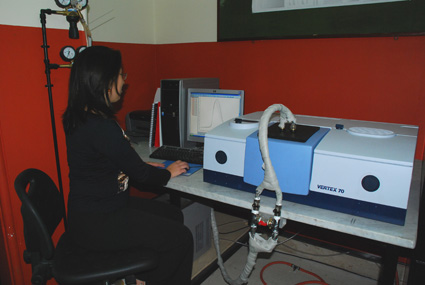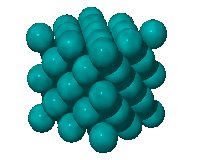Infrared Spectrometer Laboratory
CNR-IBF
Laboratory - Technological Transfer Project
"Oil
Olive Quality Control"
- POR Sicilia - Mis. 3.15-C
Laboratory
directed by: Prof. Valeria Militello
IR spectroscopy allows to analyze the
intrinsic vibrational modes of biological samples. The main investigated
infrared zones are those of the Amide I and Amide II bands. Amide I band
is due to an out of phase combination of the C=O and C–N stretching modes
of amide groups. Generally, it has a composite profile consisting of several
spectral components related to the different types of secondary structures.
By performing kinetics at controlled temperature, the time evolution of
its spectral components during thermal treatment is a probe of protein
structural changes. In particular, it is possible to monitor the usual
conversion of α-helical structures in β-sheets and the formation
of β-aggregated structures as a consequence of the protein heating.
Amide II band is predominantly associated with the N–H in-plane bending
of the peptidic groups. Its time evolution gives information on the protein
unfolding. In fact, its changes reveal the replacement of the hydrogens
located in the core of the native protein when a heat-induced partial
opening of the protein takes place; when H–D exchange occurs, a simultaneous
increase of Amide II’ (N-D in plane bending) and decrease of Amide II
is observed.
The IR spectrometer is also equipped with a cryostat allowing the study
of the spectra of samples at cryogenic temperatures. The main technical
features of the spectrometer are listed below.
|
FT-IR
spectrometer: Bruker Vertex 70 |
This laboratory is integrated in MeSIAM - Regional Laboratory of CNISM
| Contact us at ----@fisicaechimica.unipa.it | ||



